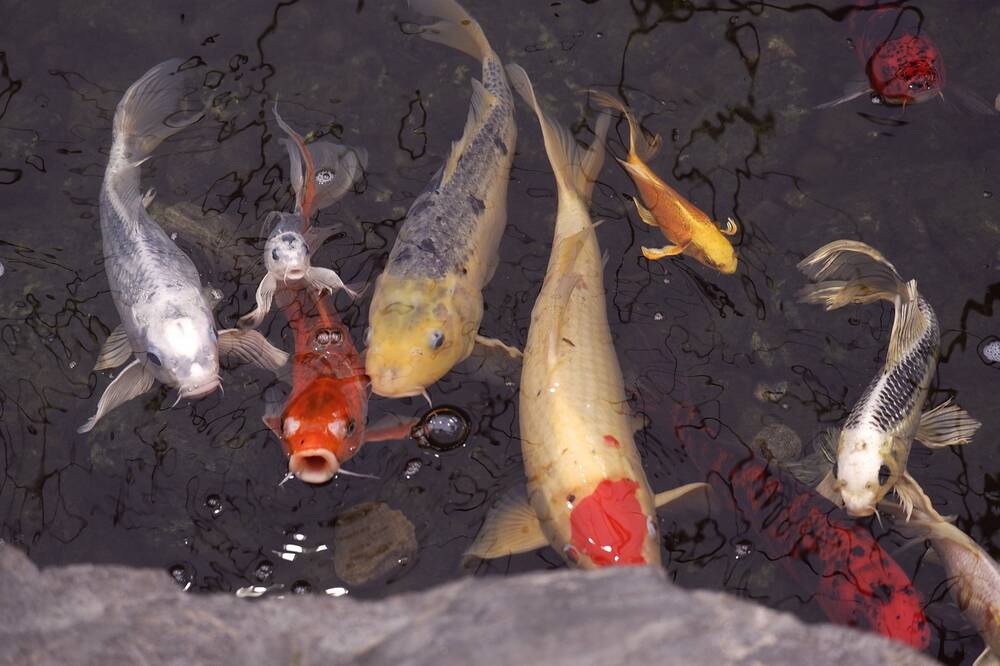Wetlands offer prolific ecological value and are some of the most powerful carbon sinks in the world, making them invaluable in combating climate change. Beyond this, their dense variety of habitats makes them biodiversity hotspots, and naturally strengthened ecosystems provide essential ecosystem services like water filtration and purification.
Regardless, many wetlands have been degraded over time, and replaced with farmland, urban development, or remain in a damaged state with struggling native populations. This blog covers their vast ecological importance, and how wetland restoration and creation projects are helping save wetlands and our environment. We cover the structures, processes and challenges of the projects, plus some highly successful real-life examples.
The Ecological Importance of Wetlands
Wetlands are areas where the land is either seasonally or permanently saturated with still or slow-moving water, such as swamps, bogs, marshes, or fens.
They bear significant ecological importance, due to their critical ecosystem services, climate regulation, and the ranges of diverse plant and animal species that their habitats support.
Here are some primary examples illustrating their ecological importance and why it is essential to support wetland creation.

Biodiversity Support
Wetlands offer unique ecological value as they can be made up of a large variety of habitats, including open water, marshes, reed beds, flooded forests, swamps and mudflats.
With abundant water and nutrient-rich environments, these habitats can create ideal sheltering, feeding and breeding grounds for a diverse range of animals, such as migratory birds, fish, and many endangered species.
A rich range of habitats equates to more biodiversity and more complex food webs. These are less susceptible to external harm like invasive species or climate change, and more self-sustaining with thorough ecosystem services.
Wetlands globally can be rich biodiversity hotspots, like peatlands and tropical mangroves—read to the end to learn about some real-life examples.
Water Filtration and Purification
Wetlands provide some of the best habitats for water filtration and purification, essential to thriving biodiversity on the planet. Without these ecosystem services, there would be contaminated water sources, poorer ecosystem health and the widespread need for artificial water treatments.
Wetlands filter water by trapping pollutants, such as agricultural rainwater runoff with chemicals and pesticides, which get absorbed and trapped into the soil and plant roots as they use the nutrients.
Microbes in the wetland soil also help break down harmful chemicals, and sediments like soil particles, organic matter, and heavy metals settle at the bottom, preventing them from polluting nearby water bodies.
Flood Control and Water Retention
Another immense ecological benefit of wetlands is flood control.
Wetlands act as giant natural sponges—they absorb all excess water (rainwater and stormwater), then gradually release it back into the atmosphere through evaporation.
Without the wetlands in place, downstream flooding could cause wildlife disruptions, property damage, loss of crops or other harmful disruptions.
In coastal areas and floodplains, wetlands protect shorelines from erosion and reduce flood risk from storm surges.
Moreover, wetlands essentially retain water, which maintains sufficient levels of groundwater (water stored under the earth), allowing for a stable water supply.
Carbon Sequestration
Wetlands are highly efficient carbon sinks, as they can store immense amounts of carbon in waterlogged soils, where a lack of oxygen means that organic matter breaks down a lot slower, preventing the release of CO2₂.
Peatlands, for example, are particularly efficient as they accumulate dense layers of peat, meaning there is much less oxygenation than other wetland types. Did you know that on average, peatlands store more carbon per unit area than forests?
Wetland Creation vs. Restoration
Beyond the essential ecosystem services they provide, wetlands are invaluable in restoring biodiversity levels and mitigating climate change. Because of this, many organisations worldwide make copious efforts to either restore or create wetlands.
Human activities have led to the degradation of various wetlands, such as the polluting chemical runoff from agricultural land, rising temperatures from climate change, construction and infrastructure projects, and even agricultural drainage.
When wetlands are drained for farming, their natural hydrology is ruined, and habitats are destroyed. When peatlands are drained, adding the oxygen to the peat means that the stored CO₂ is then released back into the atmosphere.
This is why wetlands can either be restored, or created entirely from existing habitats.
Steps in Wetland Creation

When creating wetlands afresh, there are various ecological and environmental considerations that must be thought out beforehand.
Site Selection
When selecting a site to create a wetland on there are certain criteria that are sought-after, and others also avoided.
Crucially, you should look for areas within a low-lying topography (physical features of an area), such as a depression or a floodplain, as this will naturally collect water.
Furthermore, it’s important to have an area where the water won’t easily drain away, for water retention purposes (for instance, a clay-rich soil field will hold much more water than a sandy or gravelly soil field.)
It’s an addition to being close to water sources like a river or lake, allowing for a consistent flow of water, and furthermore degraded land is a prime target as it offers larger potential for ecological restoration.
Avoid urban areas overpowered with infrastructure, steep terrain, well-drained soils, and high-contamination areas (e.g. pesticides, industrial waste or heavy metals).
Designing the Wetland Ecosystem
When designing the wetland’s ecosystem, the best results will come from those mimicking natural wetland features—like marshes, bogs and ponds. If they resemble those found in nature, they will be more resilient and effective in offering ecological benefits.
Ensuring there is a range of water depths supports a broader range of species, encompassing both terrestrial species, such as beavers, as well as amphibians, such as frogs.
Islands, vegetation zones and buffer areas should be added for varied habitats with additional areas for shelter, protection and food sources for wildlife.
Water Management Strategies
Various strategies of water management must be considered when creating a wetland. This is to maintain water quality, prevent flooding, protect ecosystems, and ensure sustainability, while also maximising the availability of water.
This could be controlled water inflows, with pumps or gates managing how much water comes through, adjusted seasonally. It could further be retention basins, which store water and slowly release it back into the habitat, allowing for consistency during dryer periods.
Moreover, a system of water level monitoring with sensors or gauges allows risks of floods or drought to be identified easily.
Vegetation and Wildlife Integration
Finally, native plants will be added. These must be well-suited to the specific ecological contexts, such as soil conditions and hydrology. Examples could be reed, water mint, yellow flag iris, or the marsh marigold.
The diversity of species will provide a range of habitats, food sources and areas for shelter and breeding.
Then local birds, insects, amphibians and other wildlife species can be integrated into the wetland, such as frogs, water voles, otters, kingfishers, or newts.
It’s good practice to monitor for invasive species to ensure a resilient, biodiverse, thriving ecosystem, and reap the optimal benefits from your created wetland habitat.
Steps in Wetland Restoration

In the same vein, various steps and structures must go into wetland restoration to ensure it is carried out effectively.
Identifying Degraded Wetlands
The first stage is to locate the degraded wetlands suitable for restoration.
For instance, a degraded wetland would reveal the presence of invasive species and a decline in native plants, which can be revealed through vegetation assessment.
Testing soil conditions with sampling kits can analyse pH and nutrient levels, as well as organic matter content, revealing either healthy or degraded soils.
Wildlife surveys and observations can identify species abundance and identify declines in populations, and furthermore, aerial or satellite imagery can identify fragmentation or loss of area over time.
Restoring Hydrology
After choosing the site, you will restore its hydrology by re-establishing natural water flow. Ditches, drains, and culverts should be removed, as they divert water away from its natural path. Gates, weirs (a type of dam), and sluices (a type of gate) can regulate water flows to mimic optimal natural processes, ensuring sustainable water levels in the long term.
Assess the surrounding landscape, and reconnect any water sources that may have been lost to drainage or development.
Reintroducing Native Vegetation
At this stage, you can rebuild biodiversity. All invasive species, debris and competing vegetation must be removed, and then you can reintroduce a diverse variety of plant species that were historically present and are well-suited to the soil, hydrology and climate. Aim to plant during optimal seasons, like spring or autumn.
The more complex the food web, the more resilient and strengthened the ecosystem will be, allowing nature to thrive further.
Monitoring and Adaptive Management
After the plants and animals are added, the wetland must be monitored to ensure ecological conditions, biodiversity and ecosystem services are restored.
Vegetation surveys ensure native plant populations are healthy and on track, wildlife camera traps can capture the presence of an abundance of target bird, amphibian, or other species.
Soil can be measured, as well as water quality testing for pH, contaminant and nutrient levels to ensure optimal conditions as it would be in a natural environment.
Challenges in Wetland Creation and Restoration

Wetland creation and restoration is a complex challenge that involves addressing climate change and environmental pressures while balancing ecological health with human needs. Here are a few of the challenges that can arise.
Funding
Wetland projects require significant investment, with a comprehensive planning stage required, from the initial site assessments to choosing the locations all the way to the ongoing, long-term management and monitoring costs.
The ecosystems take time to fully develop and may require constant management until this stage is reached.
Climate Change and Environmental Pressures
Climate change poses challenges on wetland projects, with increased flooding from intensified rainfall or longer dry spells reducing water availability.
Rising sea levels can submerge wetlands, harming habitats, and posing risks to freshwater species by adding salinity.
Global warming can facilitate the moving-in of invasive species that thrive in higher temperatures, which could go on to outcompete the native vegetation.
Balancing Human and Ecological Needs
Wetlands tend to be in areas that are highly sought-after for agriculture, with soils rich in nutrients and organic matter, leading to them being drained.
The wetland habitats can offer vast aesthetic and scenic value, attracting recreational activities like fishing, boating and birdwatching.
Furthermore, their natural beauty makes them ideal for urban development, where their proximity to water sources and flat terrain make construction and urban planning easier and more attractive.
However, these developments often come at the expense of the wetland’s ecological functions, leading to habitat loss and diminished biodiversity.
Real World Examples
A highly successful wetland restoration project is the Comprehensive Everglades Restoration Plan (CERP) in southern Florida, focusing on the Everglades ecosystem spanning over 18,000 square miles.
It’s a multibillion-dollar initiative to restore biodiversity lost due to drainage canals created for urban development and agriculture, which led to issues in water quality and habitat loss.
The 40-year project began in 2000 and has made significant strides in restoring the ecological health of the Everglades, with wading birds, crocodiles and snail kites showing positive trends in species populations.
In the UK, the Wallasea Island Wild Coast Project in Essex is one of the most innovative and largest wetland restoration projects in Europe. Led by the RSPB (Royal Society for the Protection of Birds), it’s restoring ancient coastal habitats, including mudflats, lagoons and saltmarshes, which were turned into agricultural land. It’s now a vital habitat for many bird species, such as avocets, spoonbills and Brent geese, plus supports over 20,000 waterbirds.
More Information
https://education.nationalgeographic.org/resource/wetland/
https://www.worldwildlife.org/stories/what-is-a-wetland-and-8-other-wetland-facts
https://www.wildlifetrusts.org/habitats/wetlands
https://www.wwt.org.uk/discover-wetlands/wetlands/
https://www.wildlifetrusts.org/habitats/wetlands
https://www.rewildingbritain.org.uk/why-rewild/what-is-rewilding/examples/the-ins-and-outs-of-wetlands
https://iucn.org/resources/issues-brief/peatlands-and-climate-change
https://www.evergladesrestoration.gov/comprehensive-everglades-restoration-plan
https://www.rspb.org.uk/days-out/reserves/wallasea-island

